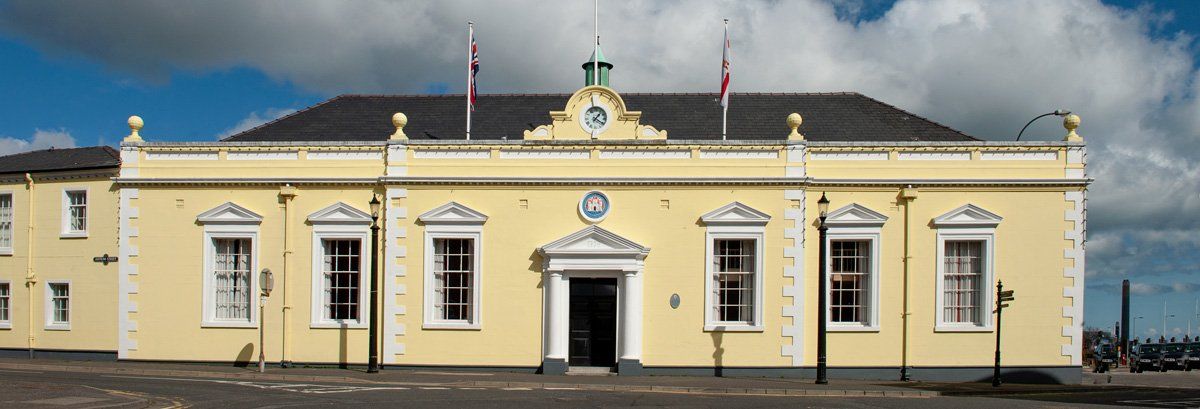About the Town
Although the castle is the predominant feature of Carrickfergus, the town itself has excellent period architecture spanning its history. St. Nicholson Church is well worth visiting having an ecclesiastical heritage which goes back to the time of John de Courcy. It also has the ornate tomb of Sir Arthur Chichester which is impressive and unique. When Charles 1st became King, the dissent took place within the Protestant faith due to imposed religious restrictions. This created a split in civil society between the Royalist and the Parliamentarians, a civil war broke out in 1642, this fact helped fuel the rebellion in Ireland. The Parliamentarians under the leadership of Oliver Cromwell arrived in Ireland to quell the uprising, during his time here, he lay siege to the castle which surrendered. Cromwell then ordered all those of Catholic faith to move outside the fortified walls. Today you will find an Irish and a Scotch Quarter in the town which links back to those times.
During the English war with France 1756-63, French prisoners were kept in the castle. In 1760 Francios Thurot made a daring early morning raid on the town and castle, he landed a few hundred men at Kilroot, they took the town and castle after a short standoff, he then released all the French prisoners and set fire to a part of the town before setting sail. The Royal Navy later intercepted the French ships off the Isle of Man which they sank and in the process, Thurot was killed. During the 1798 rebellion of the United Irishmen, many local men joined up including Presbyterian ministers. It was here that William Orr was tried and hanged for giving the oath of the United Irishmen to an enlisting soldier, the case was highly controversial and widely regarded as judicial murder. Henry Joy McCracken was arrested close to Carrickfergus on his way to Greenisland to board a boat for Scotland, he was taken Belfast, where he was tried and hanged at the Cornmarket.
The Flame Gasworks is the last surviving coal gasworks in Ireland and today is preserved in the Irish Quarter West. It produced gas here from 1855 to 1967. Today it serves as a museum to that industry complete with a working gas holder which has panoramic views of the town. There are only three examples of this type of gasworks left in the United Kingdom, this is the only one in Ireland. Carrickfergus has a great promenade for walkers closeby are Marine Gardens, a recreational space for adults and children, adjacent to this is the War Memorial with a Churchill tank and field gun on permanent public display. The Courtyard on Green Street is a beautiful setting with trees and seating surrounded by craft, art and gift shops combined with two food locations.



